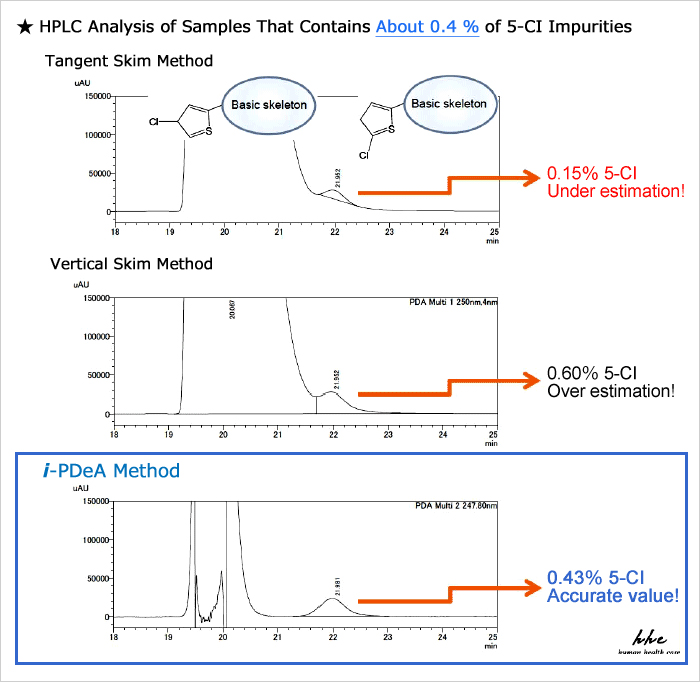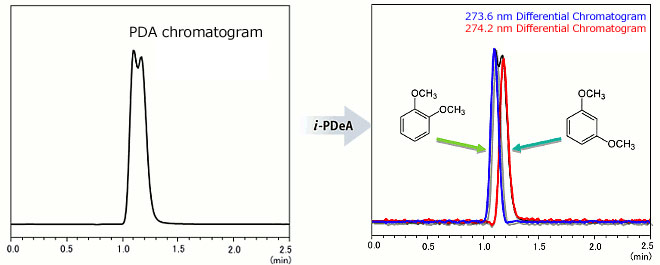The Unique i-PDeA Analysis Method
What Is i-PDeA? – An Introduction Through Application Examples –
This new analysis method analyzers and detects unseparated peaks and small peaks concealed in the main component. It reduces the time required for considering separation conditions and plays a complementary role in quantitative analysis.
Here, we introduce some benefits of i-PDeA through application examples.
Example 1: I have developed an ultrafast analysis method, but want to further reduce analysis time. However, shortening the analysis time would affect separation.
・When you apply i-PDeA, you can selectively visualize only the components you want to view, even peaks that that are not separated!

Using i-PDeA, the VP and DFBP Peaks Can Be Separated!
(DFBP: Difluorobenzophenone, VP: Valerophenone)

A Calibration Curve Created Using i-PDeA for the VP Standard Sample
Example 2: I want to correctly quantify the impurities that are eluted in the tailing of the main component peak.
・With i-PDeA, no additional consideration of separation conditions is required! Quantitative calculation can be done directly!

These materials were provided by Mr. Kanta Horie, Global Formulation Research, Pharmaceutical Science & Technology, Eisai Co., Ltd.
Compared to existing peak integration methods such as tailing (tangent skim method) and vertical separation (vertical skim method), i-PDeA permits quantitative calculation of impurities with higher precision!
Example 3: Separation of position isomer compounds fails to work well.
・Achieve separation using i-PDeA even though the spectral patterns are similar

Separation of 1,2-Dimethoxybenzene (274.2 nm wavelength) and 1,3-Dimethoxybenzene (273.6 nm)
Even though the difference in absorption wavelength between 1,2-dimethoxybenzene (274.2 nm wavelength) and 1,3-dimethoxybenzene (273.6 nm) is only 0.6 nm, the individual chromatograms can be obtained!


